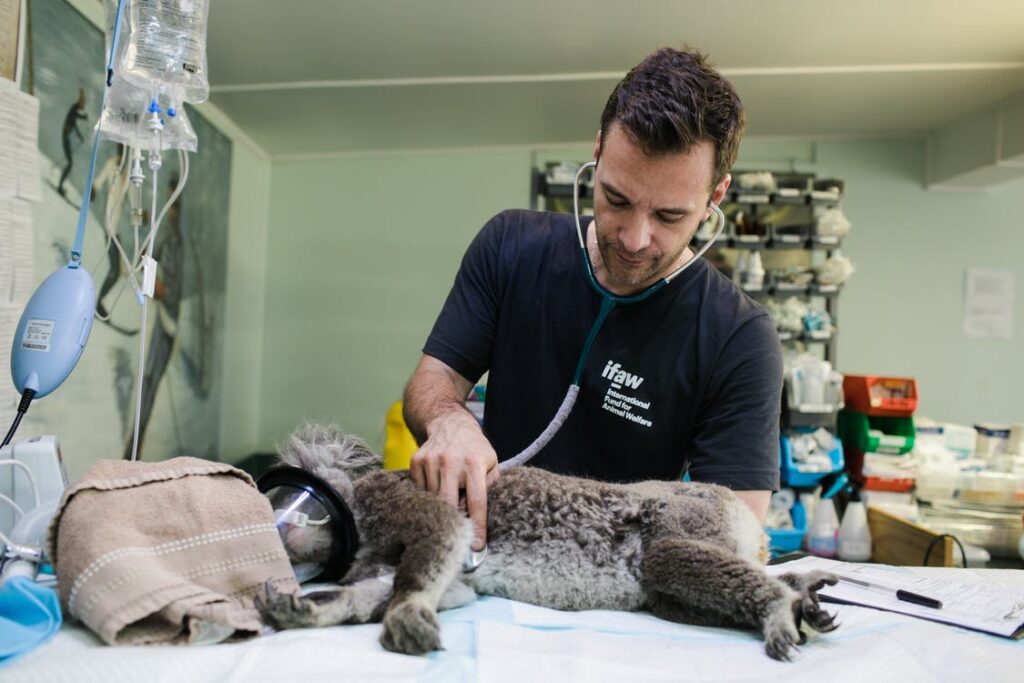
An owner never wants to see his or her dog in pain. Dogs can sometimes face serious injuries or illnesses that will make you worry or concerned about their health. As a dog owner, you need to keep your pet’s health in mind. Make sure you watch for these signs of sickness or pain so you can help your dog as needed.
Watch Out For The Signs

We will start by addressing various signs of sickness or pain that dogs show when they face these problems. Remember that these signs don’t confirm that your dog has a sickness or physical ailment, but you should be mindful of them. If they persist, you should look into the different ways you can help your furry friend.
Limping
Your dog won’t limp unless he or she feels pain. Limping can let you know that your dog currently has pain in his or her leg or your dog may have arthritis. Dogs limp when they feel pain in their legs, but they will suffer through it because they want to move around. If it’s due to arthritis, your dog may have serious pain and inflammation.
You can check your dog’s leg for inflammation, the problem won’t always be visible. If your dog limps, make sure you continue to watch him or her for the next few days. If the limping continues or it gets worse, you should look into the problem.
Persistent or worsening limping should never be ignored, as it could indicate an underlying issue that requires attention. By proactively addressing your dog’s health needs with high-quality supplements like those from Mighty Munch Australia, you can help ensure that your pet enjoys a happier, pain-free, and active life.
Yelping

Many dogs will yelp when they feel pain or if something surprises them. For example, if you pick up your dog suddenly, he or she may initially yelp because your furry friend doesn’t understand what’s happening. Dogs will also yelp when they feel pain since it lets other dogs and people know about the situation.
If you pick up your dog around the waist and he or she yelps, you should look at their abdomen for any signs of pain or irritation. Your dog may have a scratch or another injury that makes the abdomen tender. In short, if you hear your dog yelp, you should check on him or her to see if something happened.
Constantly Sleeping

If you notice your dog begins to sleep more often, he or she may be sick. You may sleep more when you become sick since your body needs to rest and focus on healing you. Dogs will do the same thing, so it makes sense when they decide to spend their days sleeping while they feel sick.
More sleeping doesn’t always mean your dog feels sick. For example, your dog may not have slept well the night before or your furry friend may feel sad or depressed. You should watch your dog and look for other signs of him or her feeling sick before you make any assumptions. You should address the issue if this behavior continues.
Less Excited or Motivated
If your dog faces pain or sickness, he or she may feel less motivated or excited. Your dog could feel pain when he or runs around or gets excited, so your dog may stay in place and avoid moving around. If your dog stays in place but still looks excited and happy, he or she may be in pain.
If your dog doesn’t become as excited or motivated when he or she normally would, then your furry friend may feel sick. Many dogs become excited when their owners return home, so if your dog doesn’t react when you’ve been gone for a while, keeps his or her ears down, and looks away, you should continue to watch your dog as needed.
Dry Nose

You will notice that most dogs have wet noses. This is so different scents will stick to their noses so they can easily identify smells. However, certain sicknesses will dry up your dog’s nose due to dehydration. If you think your dog is sick, you should look at your dog’s nose to find out if it’s wet.
Remember that a dry nose doesn’t automatically mean you have a sick dog. If your dog hasn’t had any water in a while, he or she may be dehydrated, so you should give your dog some water first. If your furry friend still has a dry nose afterward, your dog may be sick.
What You Can Do
If you believe your dog has a sickness or shows signs of pain, you may question how you can help your furry friend. We want to provide some tips so you can care for your dog and help him or she overcome those problems. Make sure you apply these ideas so your dog can have a more comfortable and effective recovery.
Talk to Your Vet

If you suspect your dog may have health issues, you should contact your veterinarian as soon as possible. These medical specialists know how to identify health problems and the pain your dog feels. Your doctor can then help you identify the right treatment for your dog.
Once you schedule that appointment and work with your vet, you can figure out the best way to help your dog. Your vet will recommend different medications and supplements based on the problem. For example, your dog may have joint pain, so you may need to give your furry friend a dog joint supplement. You may review the rundown of these supplements at The Pampered Pup and they’ve also found the perfect places where you can buy them.
Apply the Treatment Options
Once you talk with your doctor about different medications and supplements, you should start administering them to your dog as directed. Your dog won’t know that he or she needs to take this medication, so you must take the initiative and care for your furry friend.
Remember that each medication and supplement will include instructions to let you know how often your dog needs to take it. If your dog doesn’t like to take medication, you can always sneak the pills inside of treats or pill pockets. Doing so will trick your dog into taking the medicine without spitting it out.
Comfort Your Dog

Once you follow your vet’s instructions, make sure you do everything you can to comfort your dog. This will include bringing your food to your dog, carrying him or her places, and even keeping your dog warm. Your dog is suffering, so you should care for him or her as much as possible.
Remember that your dog will need your emotional support and love. As he or she suffers during this time, you should go up to your dog and provide cuddles and pets. If your dog reacts positively, you should keep doing it. However, if your dog needs to rest, you may have to leave him or her alone. Either way, show your dog some love and provide comfort.
If your dog shows any of these signs that indicate sickness or pain, you should follow our advice. Doing so will help you care for your dog during these difficult moments in life. Keep an eye on your dog and do your best to provide for his or her needs so your furry friend can overcome these struggles.








